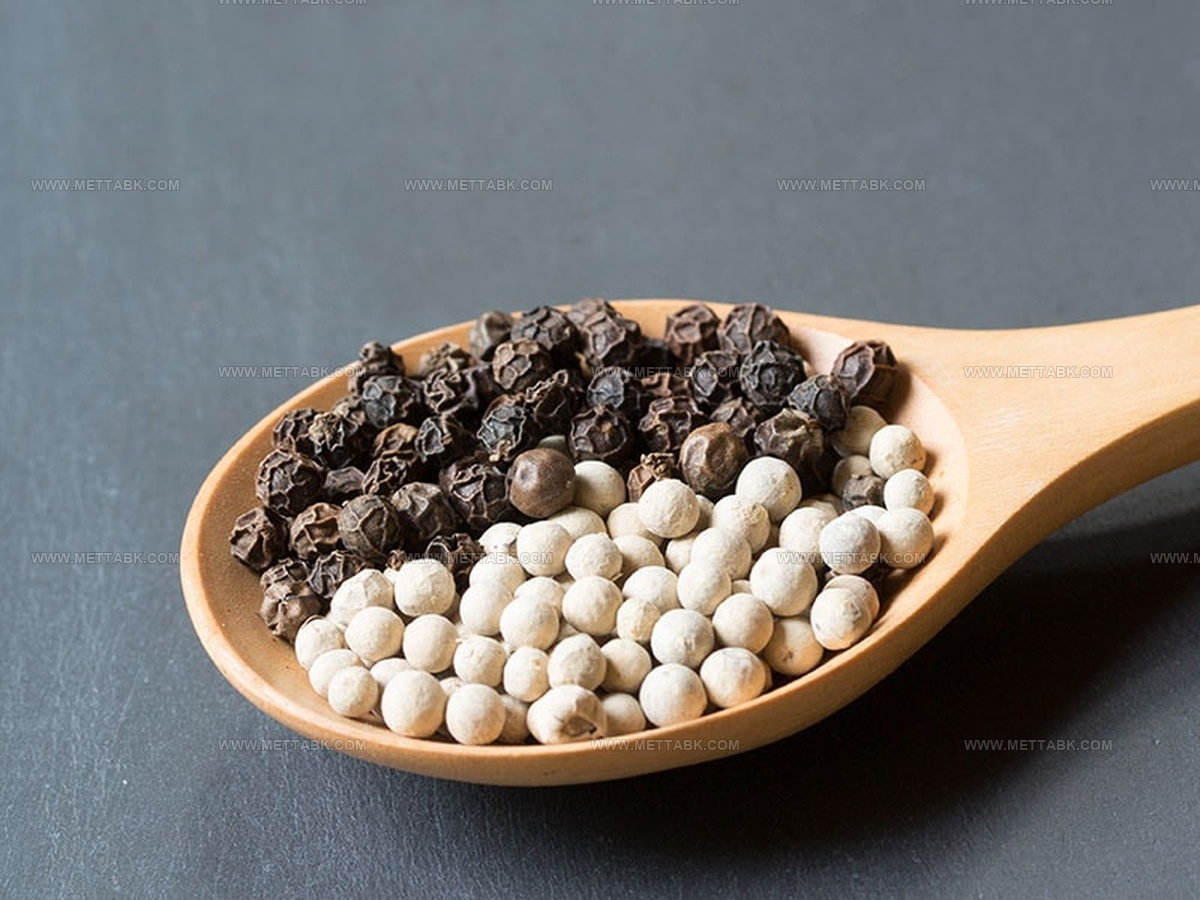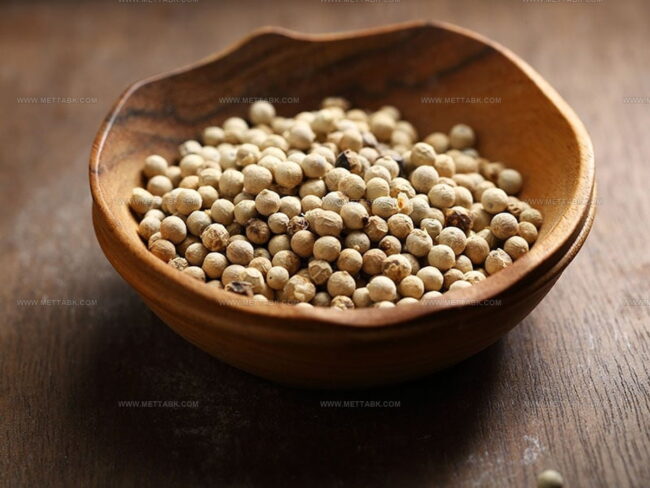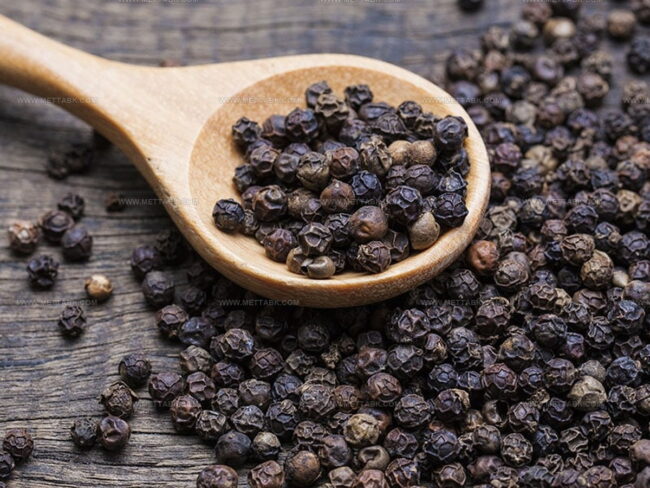White or Black Pepper: Know the Flavor Distinctions
White pepper and black pepper represent two common spices found in kitchens worldwide.
Aromatic spices come from the same plant but undergo different processing methods.
Most chefs prefer black pepper for its bold flavor profile and distinctive aroma that enhances many dishes.
Some Asian cuisines traditionally call for white pepper because of its subtle heat and less visible appearance in light-colored foods.
French culinary traditions often employ white pepper in cream sauces and mashed potatoes for aesthetic reasons.
The choice between these two varieties usually depends on the specific dish requirements and personal taste preferences.
Professional cooks sometimes use both types in their repertoire for different applications and flavor nuances.
Next time you reach for the pepper mill, you might appreciate knowing the unique characteristics of each variety.
White Pepper: A Culinary Allure
White pepper comes from the pepper plant Piper nigrum, grown mainly in farming regions of Indonesia, India, and Vietnam. White pepper is made from the ripe seeds of the pepper plant with the outer skin removed.
It has a milder, earthier flavor compared to black pepper and is often used in light-colored dishes like creamy sauces, soups, and mashed potatoes to avoid dark specks.
When cooking with white pepper, add it early in the process to allow its subtle heat to infuse the dish, but be cautious; its flavor can become overpowering if used excessively.
Health Benefits Of White Pepper
White pepper not only adds flavor to your meals but also offers several health benefits. This tiny spice contains piperine, a compound known to boost metabolism and aid digestion by stimulating the production of digestive enzymes.
This can help reduce bloating and improve nutrient absorption. White pepper also has antioxidant properties, which help fight free radicals and protect the body’s cells from damage.
The Proper Ways To Store White Pepper
For storage, keep white pepper in an airtight container away from heat, moisture, and direct sunlight to preserve its aroma and potency. Whole white peppercorns retain their flavor much longer than pre-ground white pepper, so grinding fresh as needed is ideal.
Stored properly, white pepper can stay fresh for up to two years, maintaining its best quality and taste.
Exploring the Spicy World of Black Pepper
Black pepper, often dubbed the "king of spices," is one of the most widely used and cherished spices worldwide. Derived from the dried unripe fruit of the Piper nigrum plant, black pepper delivers a bold, pungent heat that adds depth and warmth to countless dishes.
Its versatile flavor profile ranges from sharp and spicy to woody and slightly citrusy, making it a kitchen staple in both savory and some sweet recipes.
Whether freshly cracked or ground, almost any meal can benefit from a dash of black pepper - it works wonders in soups, stews, egg dishes, and as an essential meat seasoning before cooking.
People in African countries take black pepper beyond savory applications, incorporating it into sweet creations too.
Health Benefits Of Black Pepper
Black pepper offers numerous health advantages that go beyond just adding flavor to meals. Its impressive antioxidant content helps fight inflammation, protects against heart disease, and may reduce cancer risks - all thanks to piperine, a powerful plant compound scientifically proven to combat harmful free radicals.
The benefits don't stop there as this common kitchen spice also enhances digestive function, speeds up metabolism, and provides relief from respiratory conditions including asthma and nasal stuffiness.
How To Store Black Pepper?
Black pepper stays good for three to four years when sealed and stored in a cool, dry spot. The flavor begins to fade after about four months, though.
For best results, keep your opened pepper in the fridge inside an air-tight container and try to use it quickly. This simple storage method helps maintain the spice's rich taste in all your home-cooked meals.
White or Black Pepper: The Flavorful Comparison
White versus black pepper, each with distinct characteristics worth exploring. And understanding these differences helps you make better choices when seasoning your next meal.
Check this table for a quick view of how white and black pepper are different.
| Feature | Black Pepper | White Pepper |
| How They Are Made | Made from unripe or nearly ripe berries, dried with skin on | Made from fully ripe berries; soaked to remove skin, leaving only the seed |
| Price | More widely available and generally less expensive | More expensive due to longer, more complex production |
| Texture and Appearance | Rough, wrinkled black outer skin; crunchy texture | Smooth, pale beige seed; softer texture |
| Flavor Difference | Stronger, floral, pungent, and complex flavor | Milder, grassy, earthy, with clearer, sharper spiciness |
| Culinary Uses | Widely used in Western cuisine; great for seasoning and meat preservation | Common in Asian cuisine, soups, stir-fries, sauces; used to avoid black specks in dishes |
| Shelf Life | Whole peppercorns last up to 4 years; ground lasts about 1 year | Whole peppercorns last up to 2 years; ground loses flavor after a few months |
How They Are Made
Both white and black pepper come from the same plant, Piper nigrum, but their differences stem from how they're processed and harvested, which affects their appearance and flavor. Black peppercorns are created from berries that aren't quite ripe, picked and dried until their outer skin becomes dark and wrinkled.
White pepper, on the other hand, starts with fully ripened berries that undergo a soaking process called retting for about a week. During this time, the flesh softens and breaks down, allowing farmers to remove the outer skin, leaving behind only the bare seeds that become the white pepper that people know and love.
Price
White pepper carries a higher price tag than black pepper due to its lengthy, complex production process. More work goes into making this spice, which includes extra steps like soaking and removing the outer skin.
Black pepper remains easier to find in most grocery stores, while its white counterpart often requires trips to specialty food shops or international markets.
Texture and Appearance
Black peppercorns have a rough, wrinkled black outer skin, giving them a crunchy texture and bold flavor.
White peppercorns are the peeled seeds of ripe berries, smooth and pale beige, with a softer texture and milder taste. The smooth, light appearance of white pepper makes it ideal for dishes where visible black specks are unwanted.
Flavor
White pepper offers a milder taste than black pepper, with distinct grassy and earthy notes that many cooks appreciate. Its spiciness comes through in a clean, sharp way because the outer layer has been removed during processing.
Black pepper, on the other hand, packs a stronger punch with its complex flavor profile. The outer layer gives black pepper its characteristic floral and pungent qualities that make it incredibly versatile in the kitchen.
Most home cooks prefer black pepper for everyday seasoning, while white pepper shines in certain dishes where its subtle heat and appearance won't distract from the overall presentation.
Culinary Uses
Black pepper remains a kitchen staple across the Western world, adding zip to meals as a seasoning or sauce ingredient. White pepper, on the other hand, shows up more frequently in Asian dishes, particularly Chinese cooking.
This milder variety brings gentle heat to soups, stir-fries and various sauces without overwhelming other flavors. French chefs often choose white pepper instead of black when preparing light-colored foods since it doesn't leave visible dark specks that might affect how pretty the final dish looks.
Shelflife
Black pepper stays fresh much longer than white pepper, with whole black peppercorns keeping their flavor for up to four years when stored properly, compared to white peppercorns that remain good for about two years max.
Ground versions have an even bigger gap in longevity - black pepper powder maintains its kick for a full year, while ground white pepper starts to lose its punch after just a few months.
When To Add White and Black Pepper During Cooking
For the best flavor, you should know when to add white and black pepper during the cooking.
Common Misconceptions About White & Black Pepper
There are several misconceptions related to white and black pepper. Here is the answers for these.
Got Questions? We’ve Got Solutions
1. Are white and black pepper from the same plant?
Yes, they both come from the Piper nigrum plant. The difference is in how they're processed - black pepper is made from unripe berries that are dried in the sun, while white pepper comes from fully ripened berries with the outer skin removed.
2. Which is spicier, white or black pepper?
Black pepper is generally spicier and more aromatic with a bold, pungent flavor. White pepper has a milder heat but a more complex, earthy flavor that some describe as musty or fermented.
3. When should I use white pepper instead of black?
Use white pepper in light-colored dishes like cream sauces, mashed potatoes, or white soups where black specks would be visually distracting. It's also preferred in many Asian cuisines, particularly Chinese cooking.
4. Does white pepper spoil faster than black pepper?
Yes, white pepper tends to lose its flavor more quickly than black pepper. It's best to buy in smaller quantities and store in an airtight container away from heat and light.




Nate Harper
Founder & Recipe Curator
Expertise
Single-Recipe Development, Farm-to-Table Cooking, Seasonal Menu Planning, Culinary Storytelling, Home Kitchen Innovation
Education
Cascade Culinary Institute – Central Oregon Community College
Certificate in Culinary Arts
Focus: Farm-to-table cuisine, sustainable cooking practices, and seasonal recipe creation.
Nate studied under experienced chefs who emphasized local sourcing, minimal waste, and building recipes from fresh, simple ingredients.
Nate Harper is the founder and creative force behind Make, Take, Bake. Raised in the wild beauty of Oregon’s high desert, Nate grew up surrounded by family gardens, farmers’ markets, and home kitchens that celebrated the seasons.
His early love for simple, honest food evolved into a professional passion when he attended Cascade Culinary Institute, where he sharpened his skills in creating recipes that are sustainable, satisfying, and made for everyday life.
Nate’s goal is to make cooking feel accessible, free of fuss, and full of flavor. He believes a single, thoughtfully built dish can stand alone, and sometimes even steal the show.